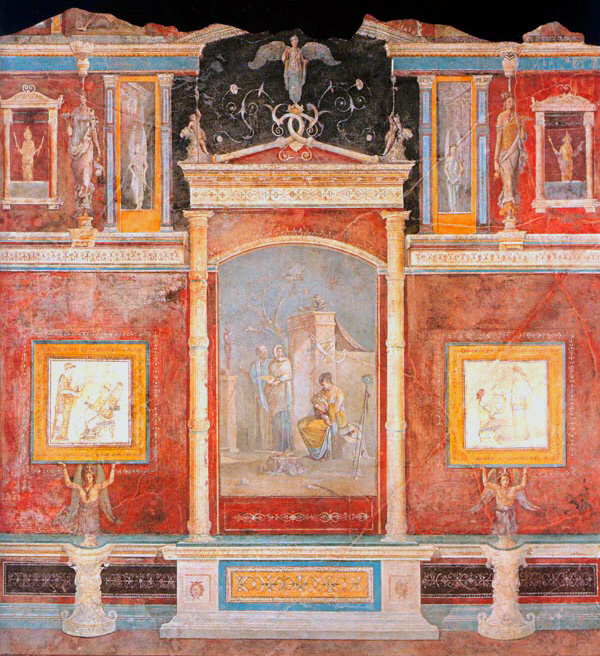27 Chapter 6.6: Roman Art: Roman Architecture continued, Domestic Architecture and Art
Roman Architecture TASK 3 (Colosseum)
Below are the most famous and structurally innovative Roman buildings. After watching the videos on each, please fill in the information that relates to the prompts provided. There are two videos for each. The second is optional but it will introduce new details and reinforce what you learned in the first.
The Colosseum
Virtual Rome: What did the Colosseum look like? – not required



Roman Architecture TASK 3 (Colosseum) prompts:
Emperor who built:
Political motivation for location:
Original name:
How current name attained:
Number of spectators:
Entrance numbers and ticketing:
Seating and status:
Architectural features:
Purpose of velarium:
Roman Architecture TASK 4 (Pantheon)
If you like you can take a virtual tour of the Pantheon here.
Virtual Rome: What did the Pantheon look like? – not required
Roman Architecture TASK 4 (Pantheon) prompts:
Original appearance and effects:
Purpose of colonnade and surrounding buildings:
Character of columns and their origins:
Dynamism of interior:
Use of concrete:
Concept of shaping space:
Oculus and movement of light:
DOMESTIC ARCHITECTURE AND ART

Introduction:
Most of the art that survives from the ancient world mainly belonged to rulers or the wealthiest people in the society. In the case of ancient Rome much is known about the way more common people lived. This information was largely preserved by the devastating volcanic eruption of Mount Vesuvius, which covered the city of Pompeii and Herculaneum (for more information on this, see Pompeii, an introduction and The Rediscovery of Pompeii and the other cities of Veuvius – not required). The videos in this section describe the types of housing units available to Romans (depending on their wealth of course) and the type of decoration that adorned them.
Domestic Art TASK 1
This video explores the variety of houses that existed in the ancient Roman empire. Below the video is a list of types of houses and their corresponding parts. After watching the video, identify the purpose of each term. Next to the type of house or structure identify who would have lived there and any distinctive features or characteristics. The second link is to a written source. It is optional to read this essay, but it may be helpful if the information in the video was not captioned.
Housing and houses in Ancient Rome – Domus, Insula, Villa
Domestic Art TASK 1 prompt: Identify the purpose of each term:
Insula
Tabernae
Cenacula
Domus
Tabernae
Fauces (vestibulum)
Atrium
Impluvium
Peristylum (peristyle)
Triclinium
Villa
Villa Rustica
Hypocaust
Domestic Art TASK 2
This video explores the architecture and decoration of a specific Roman house. After watching the video, please answer the accompanying questions.
House of the Vettii, Pompeii – Marsha Russell
Domestic Art TASK 2 prompt:
What are the most significant sections of the house and how was the flow of people and servants controlled?
Who influenced the illusionism of Roman wall painting?
What devices create perspective or a sense of depth?
House of the Menander History and Walk through (not required but helpful to imagine space)
Domestic Art TASK 3
Similar to contemporary interior design trends, fashions for wall painting changed during the Roman period. The evidence from Pompeii retains information on different styles and when each was at its height. After watching the following video, please answer the accompanying questions.
The Four Styles of Pompeian Wall Art
Domestic Art TASK 3 prompt:
Who developed the system of categorizing ancient Roman wall painting?
For each of the Four styles identify the names by which it is known and the characteristics or subjects that are distinct to that style.

